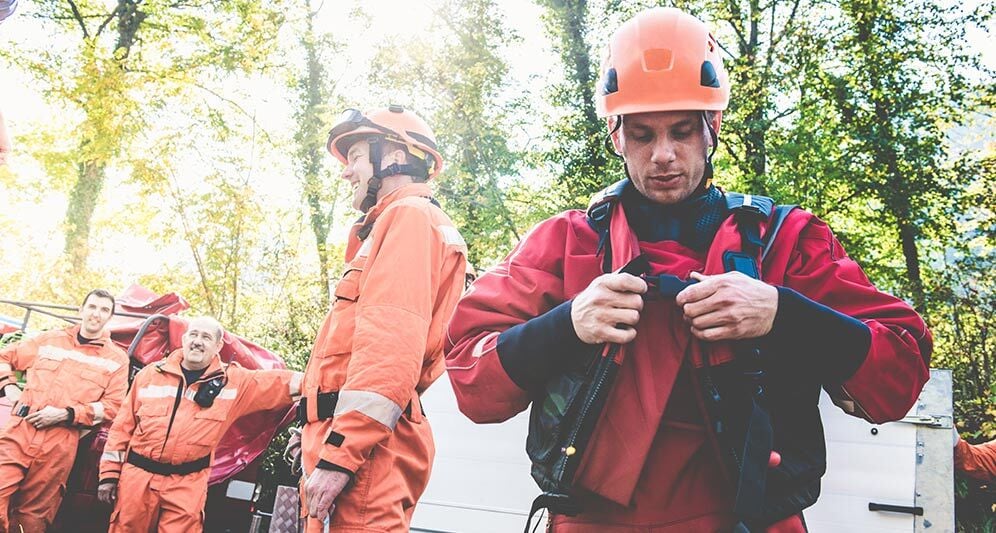While a community can never be absolutely 100% prepared (nor should that be the aim), the more realistic goal should be to prepare the community as best you can.
You can tap into many online resources to walk you through all four phases of emergency management, such a Ready.gov, FEMA’s Pre-Disaster Recovery Planning Guide for Local Governments, and International City/County Management Association’s Disaster Recovery.
But for a quick jumpstart of your government emergency planning efforts, review the following key elements first.
1. Regularly meet and review your plan
Make it a priority for city leaders and officials to meet and review the city disaster management plan that should already be in place. These meetings offer a place to address the potential threats; assess your community’s level of preparedness; discuss appropriate response actions; and review recovery plans.
EfficientGov offers a valuable set of questions that local governments can use to evaluate and strengthen their emergency preparedness plans. These planning sessions also create opportunities to focus on mitigation—taking steps to prevent potential emergencies or reduce their impact when they occur.
2. Conduct a risk assessment
A key part of government emergency planning involves evaluating the potential disasters and hazards that could affect your community. Not every community is susceptible to hurricanes, flooding, or snowstorms, so it is valuable to do a risk assessment of your community’s unique situation.
In fact, an article in Public Management eloquently captures this point, stating that, “All disasters are local. They happen in cities and towns and counties of all sizes where citizens look to their local government managers and elected officials to lead the immediate response, guide the longer-term recovery, and reassure them that life will be normal again … someday.”

3. Define clear roles and responsibilities
Every city has an assigned emergency manager, but roles and responsibilities should be clearly spelled out. Creating these job descriptions, with assigned personnel (and backup personnel) is a critical aspect of government emergency planning before, during, and after a disaster.
For example, when an emergency strikes, what are their specific functions? Who else will be notified to help? And what are their specific responsibilities during the emergency?
And don’t forget about the recovery phase – there should be clear lines of communication and coordination in the aftermath of the emergency. This will help get essential services restored as well as focus on long-term recovery efforts.
4. Communicate to all departments
Not everyone will be involved in the government preparedness process, but an emergency becomes every person’s responsibility – even if they did not sit in on the planning sessions. It is easy to overlook the fact that everyone needs to be made aware of any planning and preparation that has occurred.
This means they need to know where to find all the emergency planning documents and to understand the procedures and protocol when an emergency occurs. This covers everything from citywide evacuation plans to lockdown procedures in government buildings – anything that directly impacts them.
Cross-department communication is a critical component of an effective government emergency services plan.
The best way to achieve this comprehensive level of communication? Use a document management system to securely store your critical content, ensuring that every employee knows how and where to access it. Plus, a document management system enables you to quickly push that information out when an emergency does occur.
5. Engage the public in your planning
Don’t go it alone! Working with the community when preparing your emergency response plan is crucial throughout the process for two reasons. First, you want (and need) community members’ input on the plan since it affects them directly and personally. And second, you also want to let them know what they can do to prepare themselves, empowering them to take preventive steps to protect their family and their property. If citizens know what government emergency services can and cannot do for them, they are more likely to have realistic expectations and to take some personal responsibility in their own emergency planning and preparation.
You can encourage public engagement using both formal methods (such as community meetings, planning committees, and community-partner organizations) and informal methods (including emails alerts, social media posts, and news releases).
Regardless of how you communicate and engage your citizens, the primary goal is to focus on the people you serve, not just the internal systems and mechanisms (though they are many and far-reaching).
6. Make long-term recovery part of your plan
If you serve as your city’s emergency manager, you probably spend a lot of time completing paperwork to get reimbursed by the state/county/federal government. After all, emergency funds need to be released to help pay for overtime of first responders and the different cost-associated elements of your emergency plan.
To make this happen, you need to make sure that all the paperwork is documented and submitted in a timely manner; otherwise funding may get dispersed elsewhere before your community gets refunded. So, having a plan for the financial recovery to receive that state/federal emergency money is crucial in the short-term after an event.
But there is also more than just financial recovery post-disaster – there is the “need to re-establish a healthy, functioning community that will sustain itself over time.”
To help local governments think through this long-term recovery, FEMA just released a Community Recovery Management Toolkit noted in the resource section earlier. The toolkit offers several resources – such as case studies, guidelines, tools, and training – that will help guide government preparedness in more long-term thinking, beyond just debris removal and short-term needs.

7. Emergency training
Mapping out a thorough plan lays a solid foundation of government preparedness. But the real litmus test of effectiveness lies in training to the plan.
Outside of first responders, most government employees are not experienced in handling emergency situations. They need to understand what to do, how to proceed, and what the proper protocols are. The only way to do this is through effective training.
Don’t think that training must be a city-wide emergency drill, either. In reality, it is more effective to offer multiple short, scenario-focused training throughout the year than to try cramming all the training into one, massive session. Rather than a one-time hit, think of your training as an education process that includes training, exercises, hands-on drills, and evaluation. This all funnels back into the planning when you discover (through training) the strengths and weaknesses of your community’s capabilities, procedures, manpower, equipment, and facilities in real-world scenarios.
Doing this in a training management solution, like PowerDMS, can help save both time and money. You can host and track these trainings online to ensure employees know and understand the plan. By hosting it in the same software as your planning documents, you can easily cross-reference the plan in the training, so when one is updated, the information stays current.
Bottom line? Our tool would help you get control of all the moving pieces involved in planning for an emergency.
In summary, think of emergency response planning as a continuous process in which your efforts evolve over time to reflect your community’s threats, needs, and resources.
Start wherever you are and tap into whatever resources you have. Work (and communicate with) your community. And train, monitor, assess, and modify every step of the way. In doing so, you are protecting lives and communities as best you can.


